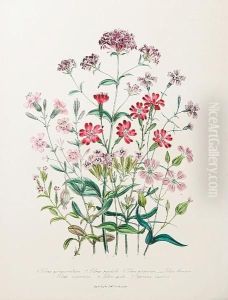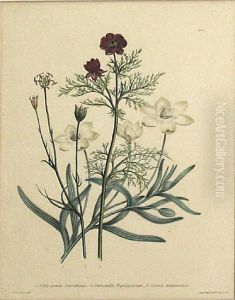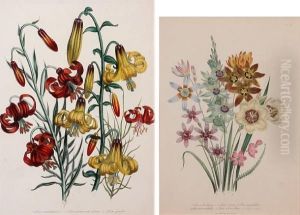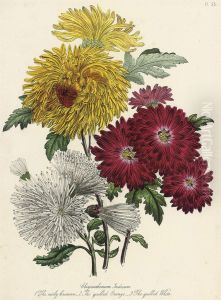Jane Webb Loudon Paintings
Jane Webb Loudon was an English author and early pioneer in science fiction, as well as a significant figure in the development of the science of horticulture. Born on August 19, 1807, in Birmingham, England, she was the only daughter of a successful manufacturer. Following the death of her mother and the subsequent financial ruin of her father's business, she turned to writing to support herself.
Loudon's literary career began with the publication of her novel 'The Mummy!: Or a Tale of the Twenty-Second Century' in 1827. The book, an early example of science fiction, depicted a future filled with advanced technology, including one of the first mentions of a type of robot. It was met with both interest and amusement, and it remains notable for its early feminist themes and visionary ideas.
After her marriage to John Claudius Loudon, a well-known writer on horticulture and landscape gardening, Jane became interested in botany and gardening. She started to assist her husband in his work, and after his death in 1843, she took over the management of his publications. Loudon's contributions to horticulture were both practical and educational. She wrote several popular books on the subject, including 'Instructions in Gardening for Ladies' (1840), 'The Ladies' Companion to the Flower Garden' (1841), and 'The Ladies' Flower-Garden' series.
Her writing was characterized by an effort to simplify the technical language of the field, making gardening more accessible to women and amateurs. She is credited with popularizing botany and horticulture among the British middle class, particularly among women, which was quite a novel approach at the time. Loudon's work was influential in the development of the English garden and in the promotion of gardening as an activity suitable for women, at a time when such pursuits were often considered beyond their capabilities.
Jane Webb Loudon's work extended beyond writing, as she also gave lectures and was involved in the design and management of gardens. Her legacy is recognized in the history of gardening, and she is remembered as a woman who broke through the constraints of her era to contribute significantly to both literature and horticulture. She died on July 13, 1858, in London, leaving behind a body of work that would continue to influence the fields of science fiction and gardening for years to come.



